
views
Creating an Extensive System

Determine whether your climate is suitable for raising snails outdoors. Most snails prefer warmth and humidity - about 25-30 degrees C (or 77-86 degrees F) and 80-95% humidity. Research the breed of snail you are planning to raise to determine whether an extensive system is an option for you or not. Also consider wind as a factor in snail growth. Wind causes snails to dry out, so you should situate your snailery in a sheltered location if possible.
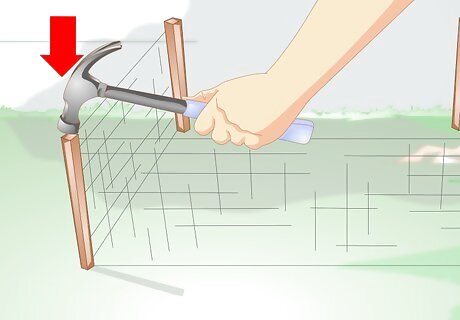
Fence in an area based on how many snails you are planning to house. Fine chicken wire mesh works well, because snails don’t like to crawl on it. Concrete blocks and bricks are also a good option. Dig the fence in at least 20 cm to prevent snails from burrowing under and escaping. It only needs to be a few inches tall if there’s no roof. If there is a roof, you’ll need to build the pen at least as tall as the potential height of the largest plants in the enclosure.
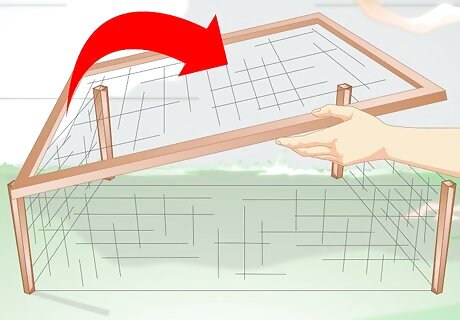
Decide whether you want a roof or not. A roof can offer shade and protection from the elements, but it’s an expensive option. If you have constructed your snailery out of a material that snails can climb, a roof is necessary to keep them in. Fine wire mesh is a good option for a roof. You can cover it with thin cloth for added protection. If you do add a roof, you will need a way to access your snails. If you are using wire mesh, attach the roof with twists of wire so that you can loosen them and get into the pen whenever you need to.
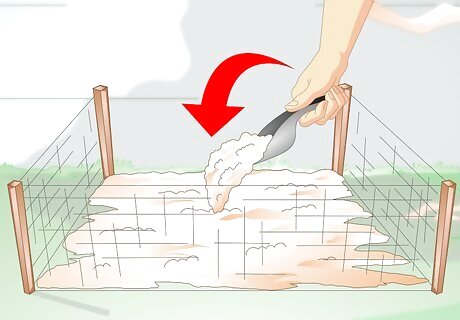
Fill the enclosure with appropriate soil. Be sure that the soil is very loose. Snails lay their eggs in the soil, so it’s important for them to be able to dig into it easily. Avoid very sandy soil (it doesn’t hold water well) heavy, clay-like soil highly acidic soil (it can damage their shells)
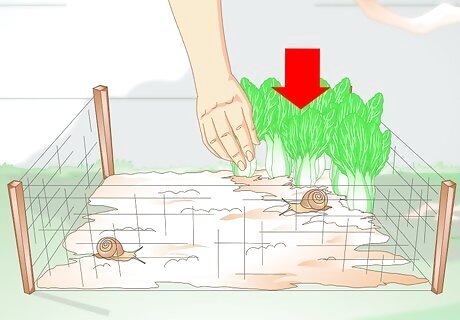
Plant vegetation in the pen. Shrubs and small trees will offer food and shelter. Plants that work particularly well are sweet potatoes, pumpkins, and leafy vegetables. You might also consider planting small trees outside of the enclosure as well. This will help protect them from wind, sun, and rain.
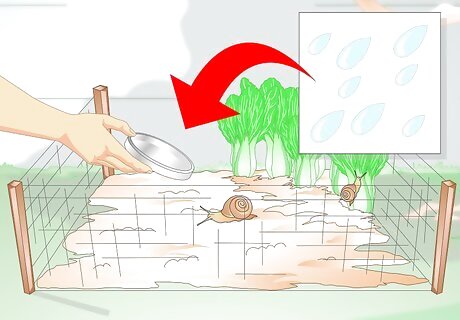
Add a small container for water. Let it collect rainwater, since tap water often contains chemicals such as chlorine, which isn't good for snails. Use something shallow (like a jar lid) so that your snails don’t topple in and drown. If the water starts to look particularly dirty or full of refuse, replace it.
Creating an Intensive System
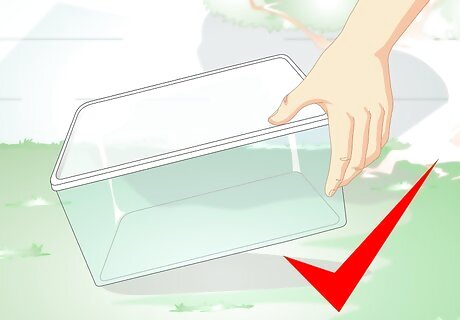
Choose your structure. Snails can eat their way out of cardboard, and they tend to be escape artists, so you will need something sturdy. Wooden boxes work well. Be sure that they are made of decay and termite resistant material. Discarded oil drums are a cheap and workable option as well. Glass or plastic containers work too. If you’re working with just a few snails, a plastic Tupperware container would work. For a few more, consider an aquarium.
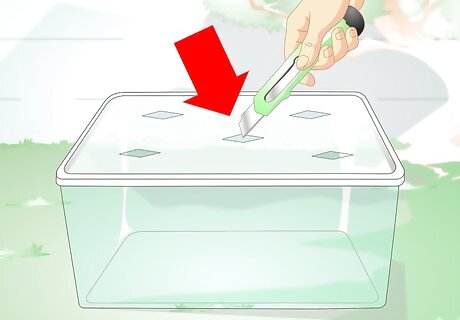
Put holes in the lid of your container. Snails houses need ventilation so that your little friends can breathe. If you are hatching baby snails, consider a wire mesh top so that they can’t escape. If you are fattening up fully grown snails, you can bore holes in the lid of your container as long as they are smaller than your snails.
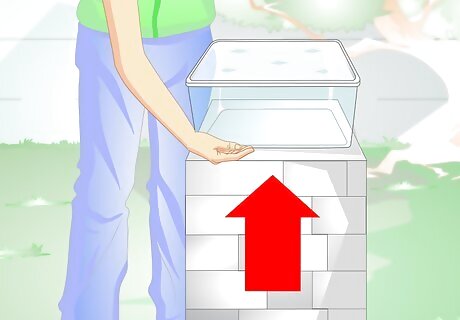
Place your structure on legs. It’s a good idea to bring the structure up to waist-height so that it’s easy to work in. If you’re planning to keep the snail house outside, legs will help keep predators out as well. You can use concrete blocks stacked on top of each other for easy legs. You should also place the snailery away from very direct, hot sunlight so that they can easily stay moist. Don’t put them under a vent, because this can cause them to dry out.
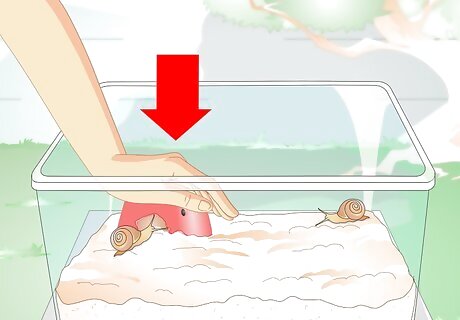
Furnish your snail house. Put at least 2 inches of potting compost in the bottom of the container. Give the little critters a shelter, such as tupperware container tipped on its side or a half-buried terracotta pot. Don’t use soil directly from your garden, because it could contain other organisms as well.
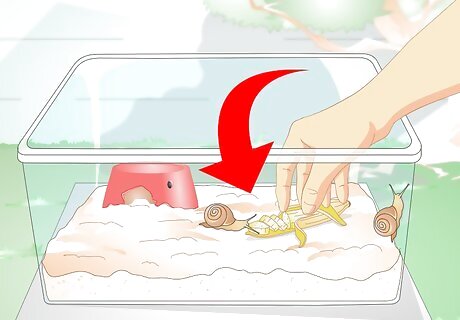
Supply your snails with food. Assuming you haven’t planted anything in your container, an intensive system will require you to regularly provide food for your snails. You can give them weeds, vegetable peelings, and pieces of fruit. Avoid plants with hairy leaves and anything that produces poisons. If any food goes uneaten and starts to rot, remove it from the container. Good fruits for snails include mangos, bananas, pears, eggplant, figs, tomatoes, and cucumbers. Snails need protein, which they can get from sweet potatoes and plantains. Household leftovers such as rice and beans are fine, but be sure that they do not contain salt.
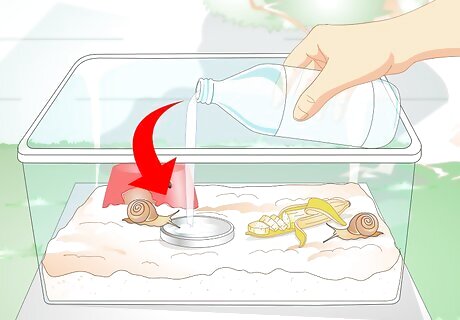
Provide a shallow container of water. The lids of jars or plastic containers work well. Tap water often contains chlorine, which isn’t good for snails. Give them rain water or water from a bottle.
Maintaining Your Snail House
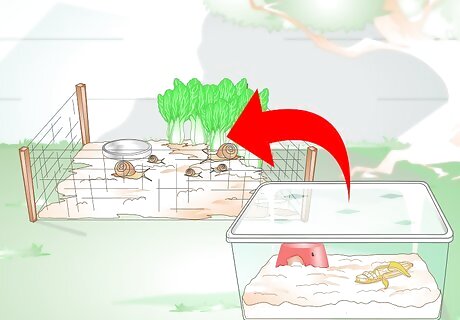
Determine whether you need to create a semi-intensive system. If you already have an extensive system, and it’s time for your snails to breed, you may find that you need to add an intensive element for hatching and rearing young snails. If you already have an intensive system housing eggs and baby snails, you may discover that you need to add an extensive component as your snails get larger and need more space.
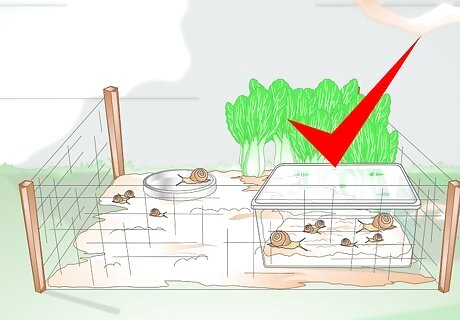
Ensure that your snail house is large enough. Add to it as your snail population increases. Overcrowding can cause snail growth to lag and can encourage the spread of disease among your snail population. Typically, you want about 1 square meter for every 100 hatchlings and about 1 square meter for every 7-10 adult snails.
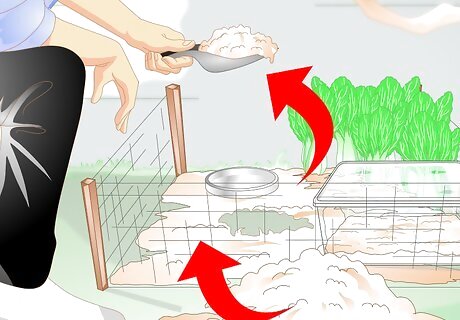
Replace the compost. About once every two weeks, take the snails out and replace the old compost with fresh. Be sure to also remove any pieces of rotten food at this time. You will need to do this with both extensive and intensive systems. Be careful of moving baby snails. Adult snail shells are hard enough that you can pick them up, but try to move baby snails by nudging them onto a stiff piece of paper and transferring them gently.
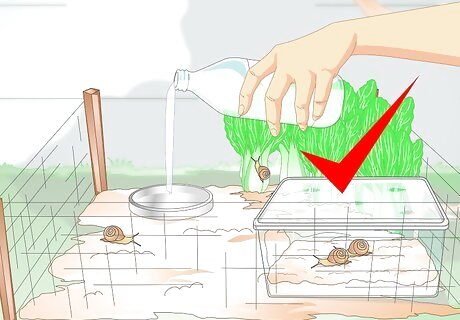
Keep plenty of fresh water in the enclosure. Use shallow dishes such as jar lids or yogurt container tops to prevent snails from falling into the water. If the water starts to look dirty or gets a lot of food or droppings in it, replace it immediately.

















Comments
0 comment